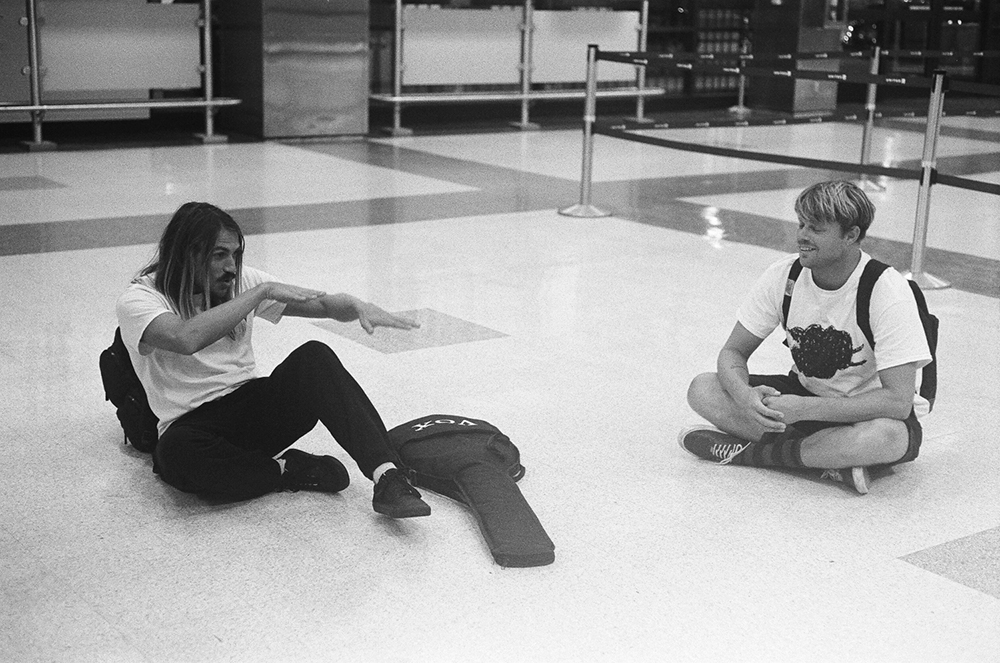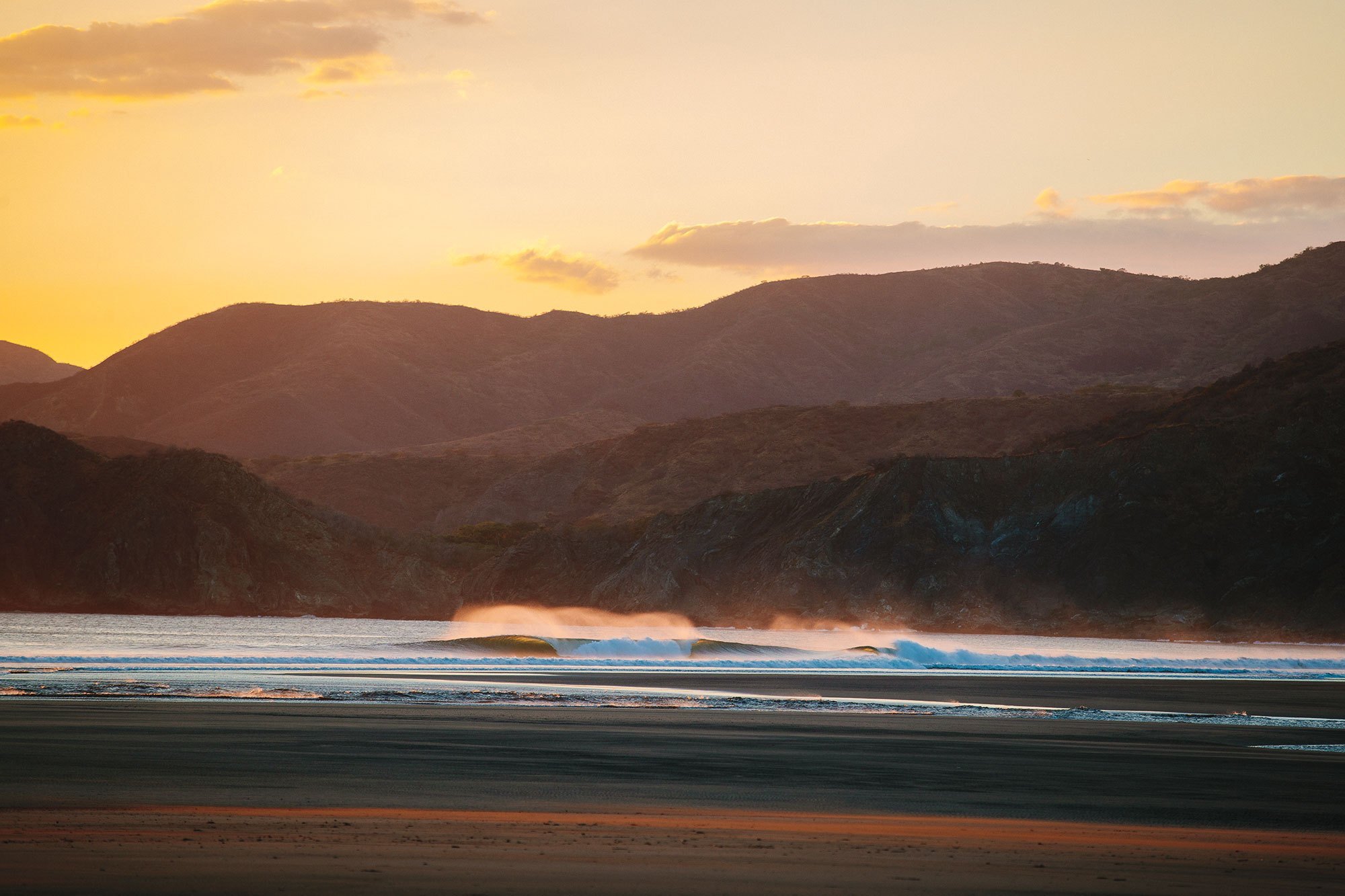Over the past few weeks, as new COVID-19 cases rise in some areas and fall in others, leaders in various parts of the world are discussing opening their borders to travelers. As of this week, France is allowing in residents of EU countries with low numbers of COVID cases and by July 1, the country will be open to international travelers from countries where the epidemic is under control. Indonesia — whose economy faces a potential loss of $4 billion due to decline in foreign tourism this year — has just announced they’re working on plans to reopen their borders to potentially 4 countries: Japan, China, South Korea and Australia.
Here in the U.S., the the CDC is still recommending travelers avoid all non-essential travel for the time being. Of course, during these uncertain times, it’s unknown as to when this advisory will change.
What is certain, however, is the fact that as restrictions lift and surfers start to flit off to far-flung corners in search of surf, international travel is likely going to look different than it once did. But how different? What changes can we expect to encounter during our next wave chase?
According to various sources, when you do begin to travel again, you can expect to see a slew of changes on various steps of your journey — from when you first drag your boardbag into the airport to checking in at (and getting around) your wave-front accommodations.
Below are some changes that have already been implemented or will likely be seen in the near future. Be sure to check with the CDC, the State Department and your airline for any changes to their policy before heading to the airport with your board bag in tow.
Starting at the check-in counter, you’ll find social distance markers and plexiglass screens installed, and all staff and customers will be required to wear masks from there on out until deboarding. Some airlines, such as United, have temporarily closed their self-check-in kiosks altogether.
Some airlines will have you declare whether or not you have symptoms upon checking in, but testing is still too limited to be universally implemented, and you’ll ultimately be relying on other customers to decide whether they declare symptoms. In the meantime, United is reporting that it’s testing artificial intelligence that can assist with temperature screenings and crowd detection. Employees will be required to have their temperatures checked, though.
TSA areas, gate counters and baggage claims (where you’ll be dropping off/picking up your board bags) are frequently being wiped down, and electrostatic spraying throughout all airports (at least those which Delta serves) is supposed to begin this summer.
Experts have mixed sentiments about the safety of flying right now. According to Today’s interview with Dr. Amesh Adalja, an infectious disease expert and a senior scholar at the Johns Hopkins Center for Health Security, “you might actually see, paradoxically, less transmissions [on a plane] than, for example, at a restaurant or a swimming pool.” David Powell, a medical advisor at the International Air Travel Association (IATA) told Business Insider that airplanes, in contrast with other crowded indoor settings, are also less conducive to transmission, citing that people sit facing forward and not toward each other, and high airflow rates and HEPA filters should help.
From the gate, every single plane is being sanitized with electrostatic sprayed before boarding, which is being done from back to front to reduce the need for customers to pass one another. (Come to think of it, couldn’t we have been boarding that way all along?) The airline has also installed High Efficiency Particulate Air (HEPA) filters on planes, which are designed to catch finer particulate, but the jury’s still out on whether or not HEPA filters are effective in reducing transmission of COVID-19, according to Consumer Reports.
And as for food, you’ll find the same pre-packaged fare. Delta has also started test-distributing customer care kits, which include a face mask, hand sanitizer gel pouches and an information card.
Dylan Graves and Dane Reynolds, getting psyched in the airport before a flight to Panama a few years back, before linoleum floors were a potentially COVID-carrying surface.
According to David Slotnick, a transportation reporter at Business Insider, policies are being updated so that airlines will notify passengers and allow them to change their flights if planes are on the full side.
After a customer complaint by way of a social media post, United Airlines said that it would begin to alert passengers when flights were at 70 percent capacity or more and allow them to change their flight with no charge. Slotnick also told us that Delta Airlines said that it would “start putting extra planes into service to try and keep load factors under 60 percent” in main cabins and 50 percent in first class. According to its website, Delta will now be maintaining that cap, as well as blocking out middle seats, through September.
These policies are likely to keep changing, but the main issue remains that even if airlines were to do something to space out passengers, such as block out the middle seat (which the International Air Transportation Association deems economically impossible), the average seat width is only about 20 inches, or less than a third of the six-foot distance health officials have recommended we keep.
Again, keep in mind that not all countries are open to visitors at the moment. Indonesia, for example, is still completely closed off to foreign nationals unless they hold a Temporary or Permanent Stay Permit, are a crew of land, sea, or air transportation, are engaged in medical, food, or humanitarian aid services, or working on national strategic projects. Conversely, Portugal is open to EU citizens and other Schengen visas, as well as citizens of the United States, the United Kingdom, Canada, Venezuela, and Portuguese-speaking nations. All persons entering Portugal, however, must undergo a 14-day quarantine (which might be important to know if you’re planning a 5-day strike mission). In Fiji, all international flights on Fiji Airways are canceled until at least July 31st, and a nationwide curfew from 8 p.m. to 5 a.m. is in effect.
In certain places like Iceland, tourists will be tested for COVID-19 upon arrival and will have to download a tracking app (if you test positive, you’ll be asked to quarantine for 14 days). Those traveling to Tahiti — which opens its international borders on July 15th — will be required to take a COVID-19 (RT-PCR) test 72 hours before the departure to French Polynesia. According to Tahiti Tourism, the Ministry of Health and Prevention of French Polynesia will also randomly test a panel of travelers during their stay. In short, wherever you choose to go when it’s deemed safe to, make sure to check local requirements before you book your trip.
When it comes to accommodations, it might be wise to choose where you stay based on the availability of outdoor and open-air dining options, and general capacity. Smaller lodges and surf camps with plenty of outdoor space (and seating), or AirBnBs or VRBOs, would at least keep the crowd factor down, but then you’d probably want to secure and verify proper cleaning through your host.
Central America, before the lockdowns
And wherever you end up, it’s probably worth scanning your accommodations for signs of cleanliness: is there hand sanitizer readily available in the lobby? Are the bathrooms clean? Is there dust? These are all good indications of whether or not your lodgings are doing their due diligence.
Witches Rock Surf Camp in Costa Rica, which has remained open throughout the pandemic despite border closures and is turning to its national market until international travel becomes possible again, has been and will continue to operate with social distancing guidelines in place.
“We’ll be doing fumigations between reservations, and we’ll be deep-cleaning the restaurant on a routine basis,” says Marketing Manager Shawna Mullen at Witches Rock. The [shared facility] bathrooms are cleaned every hour, and we also have a station outside of the restaurant where everyone who comes in needs to wash their hands and use alcohol hand gel.”
Costa Rica is not mandating the use of masks at the moment, but the staff at Witches Rock Surf Camp are all wearing them; guests, however, are not required to wear face masks.
Larger hotel brands have begun rolling out plans on the corporate level. The Four Seasons, which has surf-adjacent resorts the world round including those in Santa Barbara, California, Jimbaran Bay in Bali, and Kudu Huraa in the Maldives, is collaborating with Johns Hopkins for solutions to accommodating guests in the midst of the ongoing pandemic (and perhaps in the wake of it, too). That franchise is putting together a “new global health and safety program,” which it will publish and initiate in collaboration with Johns Hopkins Medicine International, the institute’s global division.
And then how do we, as travelers, brace for all of this? Do we don hazmat suits door-to-door in transit, or even throughout resorts and lodges and strip them off merely at the water’s edge? OK, that’s definitely overkill, but surf travel for the rest of 2020 will definitely require a new degree of planning — both in terms of figuring out what waves we actually have access to, and how to get there and back as safely as possible.
One thing you can bet on is that we’d all do best to keep a travel-sized bottle of hand-sanitizer at the ready for a good while to come.
Original Post from this site


